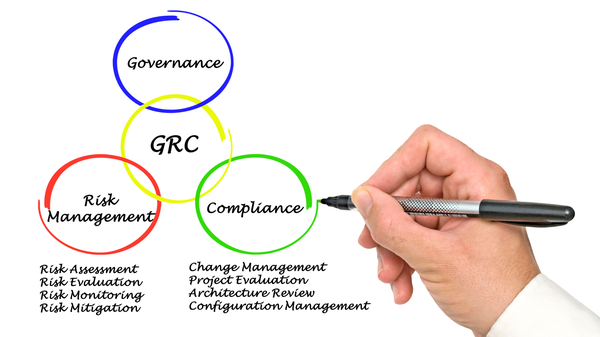
Risk management is a critical discipline for individuals and organizations alike, serving as a compass in the often unpredictable landscape of modern life and business. It involves identifying potential problems before they happen, analyzing and acting upon them to minimize their impact. Effective risk management doesn't eliminate risk entirely, but it provides a framework to make informed decisions, protect assets, and achieve objectives with greater confidence and stability.
Understanding the Fundamentals of Risk
Risk, in its simplest form, is the possibility of something bad happening. It's the potential for loss, damage, liability, or any other negative outcome, caused by vulnerability or threat. Risks are inherent in every aspect of life, from personal financial decisions to large-scale business operations. Recognizing the existence of risk is the first step; the next is understanding its characteristics – its likelihood (how probable it is to occur) and its impact (how severe the consequences would be). Risk can be qualitative (described subjectively) or quantitative (measured numerically), and often falls into various categories such as financial, operational, strategic, compliance, and safety risks.
The Importance of Proactive Risk Management
Ignoring potential risks or only reacting to them after they materialize can lead to significant and sometimes catastrophic consequences. Proactive risk management allows individuals and businesses to anticipate challenges, allocate resources effectively, and build resilience. Instead of being blindsided by unexpected events, a robust risk management framework enables planned responses, reducing panic and potential damage. This proactive approach saves resources, protects reputation, ensures continuity, and ultimately contributes to achieving long-term goals. It shifts the focus from simply hoping for the best to actively preparing for potential disruptions, turning potential weaknesses into areas of controlled strength.
Key Steps in the Risk Management Process
Effective risk management follows a structured process, typically involving several key steps. The first step is **Risk Identification**. This involves brainstorming and documenting all potential risks that could affect goals or operations. Techniques include workshops, checklists, interviews, and analysis of historical data. Once identified, risks must be **Assessed** or analyzed. This involves determining the likelihood of each risk occurring and the potential impact if it does. Risk assessment helps prioritize risks based on their severity, often using a risk matrix.
Following assessment is **Risk Treatment (Mitigation)**. This step focuses on developing and implementing strategies to manage the identified risks. Treatment options include: avoiding the risk (not undertaking the activity), reducing the risk (taking measures to decrease likelihood or impact), transferring the risk (e.g., through insurance or outsourcing), or accepting the risk (if the potential impact is low or the cost of mitigation is too high). Each risk may require a different treatment strategy or a combination of strategies.
The final steps are **Monitoring and Review**. Risk environments are dynamic, so the process isn't static. Regularly monitoring identified risks, reviewing the effectiveness of treatment strategies, and identifying new risks are crucial. This ongoing process ensures the risk management framework remains relevant and effective over time, adapting to changing circumstances and new information. Documentation and communication throughout the process are also vital for accountability and awareness among stakeholders.
Types of Risks and Their Management
Risks manifest in many forms. **Financial Risk** relates to money and investments, including market risk, credit risk, and liquidity risk. Managing financial risk often involves diversification, hedging, credit checks, and careful budgeting. **Operational Risk** concerns the potential for loss resulting from inadequate or failed internal processes, people, and systems. This includes risks related to fraud, errors, system failures, and supply chain disruptions. Mitigation involves establishing clear procedures, training staff, implementing robust internal controls, and developing contingency plans.
**Strategic Risk** relates to the potential for loss arising from poor business decisions, failed strategies, or failure to adapt to market changes. Managing strategic risk requires thorough market analysis, competitive intelligence, scenario planning, and flexible organizational structures. **Compliance Risk** involves the potential for legal sanctions, material financial loss, or loss of reputation resulting from failure to comply with laws, regulations, standards, and internal policies. This is managed through strict adherence to regulations, implementing compliance programs, regular audits, and legal counsel.
Other significant risk areas include **Reputational Risk** (damage to an organization's public image), **Cybersecurity Risk** (threats to information systems), and **Environmental, Social, and Governance (ESG) Risks**. Each type of risk requires specialized knowledge and tailored strategies for effective management. Integrating these various risk types into a holistic enterprise risk management (ERM) framework provides a comprehensive view of an organization's risk landscape, allowing for more coordinated and efficient management.
Whether for personal finances, business operations, or project planning, understanding and implementing effective risk management principles is fundamental. It's not about avoiding every potential problem but about building the capacity to face challenges knowingly and confidently. By systematically identifying, assessing, treating, and monitoring risks, individuals and organizations can build resilience, safeguard their interests, and improve their ability to achieve desired outcomes, even in the face of uncertainty.

